|
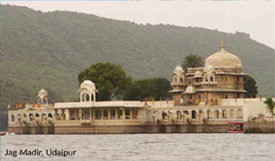 When it comes to lavishness, the palaces in India are second to none. Historically, the country was once divided into many princely states, ruled by princes who rarely stinted when it came to self-aggrandizement. The stories about their immense wealth, which included fabulous collections of gems and other expensive items, and their lavish lifestyles are legendary. When it comes to lavishness, the palaces in India are second to none. Historically, the country was once divided into many princely states, ruled by princes who rarely stinted when it came to self-aggrandizement. The stories about their immense wealth, which included fabulous collections of gems and other expensive items, and their lavish lifestyles are legendary.
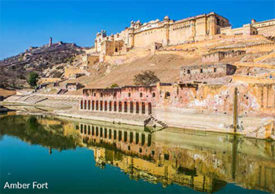 No expenses were spared in building their palaces. These were vast places, with innumerable private rooms, halls, passages, courtyards, balconies, terraces, fountains, pools, and gardens. They were extravagantly decorated with arches, pillars, tiles, decorative screens, friezes, and paintings. Some of the leading palace builders were the Rajput clans, the Mughals, the Marathas, and the various minor Nawabs and Princes. No expenses were spared in building their palaces. These were vast places, with innumerable private rooms, halls, passages, courtyards, balconies, terraces, fountains, pools, and gardens. They were extravagantly decorated with arches, pillars, tiles, decorative screens, friezes, and paintings. Some of the leading palace builders were the Rajput clans, the Mughals, the Marathas, and the various minor Nawabs and Princes.
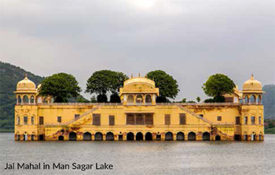 Many of the erstwhile Indian royals retained their palaces after they lost the privileges of the privy purse and, as these palaces were expensive to maintain, they joined forces with savvy hoteliers to transform them into Heritage hotels. Quite a few palaces in Rajasthan, such as Ajit Bhawan, Udai Vilas Palace, and the Jai Mahal Palace, were so transformed, and now Indian and foreign visitors can pay hefty rates to experience, if only for a brief duration, what it was like to live in these wonderful dwellings.Some of these hotels enhance the experience with cultural shows. Many of the erstwhile Indian royals retained their palaces after they lost the privileges of the privy purse and, as these palaces were expensive to maintain, they joined forces with savvy hoteliers to transform them into Heritage hotels. Quite a few palaces in Rajasthan, such as Ajit Bhawan, Udai Vilas Palace, and the Jai Mahal Palace, were so transformed, and now Indian and foreign visitors can pay hefty rates to experience, if only for a brief duration, what it was like to live in these wonderful dwellings.Some of these hotels enhance the experience with cultural shows.
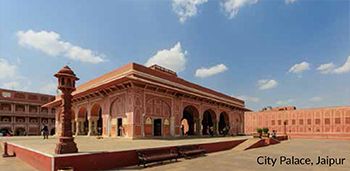 Other palaces, scattered around Rajasthan, Gujarat, Madhya Pradesh, Maharashtra, Karnataka, and other states, are generally open only for viewing, with sections transformed into museums with excellent collections of rare and valuable historical artefacts.These include the Wadiyar Palace in Mysore, the Laxmi Niwas Palace in Baroda,the Hawa Mahal in Jaipur, and the following two palaces: Other palaces, scattered around Rajasthan, Gujarat, Madhya Pradesh, Maharashtra, Karnataka, and other states, are generally open only for viewing, with sections transformed into museums with excellent collections of rare and valuable historical artefacts.These include the Wadiyar Palace in Mysore, the Laxmi Niwas Palace in Baroda,the Hawa Mahal in Jaipur, and the following two palaces:
|
Padmanabhapuram Palace
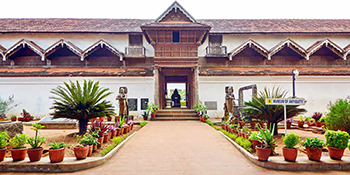 Located in Padmanabhapuram, Kanyakumari District, Tamil Nadu, Padmanabhapuram Palace was built in 1601 by the ruler of Venad, Iravi Varma Kulasekhara Perumal, and rebuilt in 1750 by AnizhamThirunalMarthanda Varma, Raja of Travancore. The palace complex is a magnificent example of traditional Kerali architecture, with tapering roofs, halls, corridors, pillars, courtyards, secret underground passages, and polished floors; interestingly, the floor in the Durbar Hall was made using river sand, lime, charcoal, burnt coconut, jaggery, and egg white! Another notable item is the King’s medicinal bed, made from the wood of medicinal plants. Expect to spend over two hours here. The intricate wood-carvings, painted murals and bronze lamps are not to be missed, as also the Antiquities Museum housed in the ThekeeKottaram. Located in Padmanabhapuram, Kanyakumari District, Tamil Nadu, Padmanabhapuram Palace was built in 1601 by the ruler of Venad, Iravi Varma Kulasekhara Perumal, and rebuilt in 1750 by AnizhamThirunalMarthanda Varma, Raja of Travancore. The palace complex is a magnificent example of traditional Kerali architecture, with tapering roofs, halls, corridors, pillars, courtyards, secret underground passages, and polished floors; interestingly, the floor in the Durbar Hall was made using river sand, lime, charcoal, burnt coconut, jaggery, and egg white! Another notable item is the King’s medicinal bed, made from the wood of medicinal plants. Expect to spend over two hours here. The intricate wood-carvings, painted murals and bronze lamps are not to be missed, as also the Antiquities Museum housed in the ThekeeKottaram.
Monsoon Palace
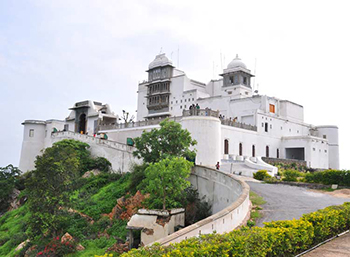 Built in 1884 by the Mewar Dynasty’s Maharana Sajjan Singh to observe Monsoon clouds, the Monsoon Palace (also known as Sajjangarh) is set at an elevation of 3100 feet on Bansdara hill in the Aravalli range and offers a grand view of Udaipur and the surrounding countryside. The sunsets are spectacular too from this vantage and the white marble palace looks like something out of a fairytale when illuminated in the evening. Built in 1884 by the Mewar Dynasty’s Maharana Sajjan Singh to observe Monsoon clouds, the Monsoon Palace (also known as Sajjangarh) is set at an elevation of 3100 feet on Bansdara hill in the Aravalli range and offers a grand view of Udaipur and the surrounding countryside. The sunsets are spectacular too from this vantage and the white marble palace looks like something out of a fairytale when illuminated in the evening.
While there is plenty to see in India, visitors should put the palaces of India on their itinerary. It is not simply a matter of getting a taste of how the privileged few lived back then, but about getting a sense of the country’s history. Many of the people who built these palaces and dwelled in them were extraordinary personalities and lived in extraordinary times, and walking where they once walked can be an incredible experience.
If you close your eyes, the past comes alive. You can almost hear the footsteps of the maids, the summons of the criers, the hooves of the horses, the trumpeting of the elephants, and the sounds of nagara drums and tutaris.
You may not want to take a time-machine back – history is always more romantic in the rear mirror – but it was undoubtedly an exciting world while it lasted.
|
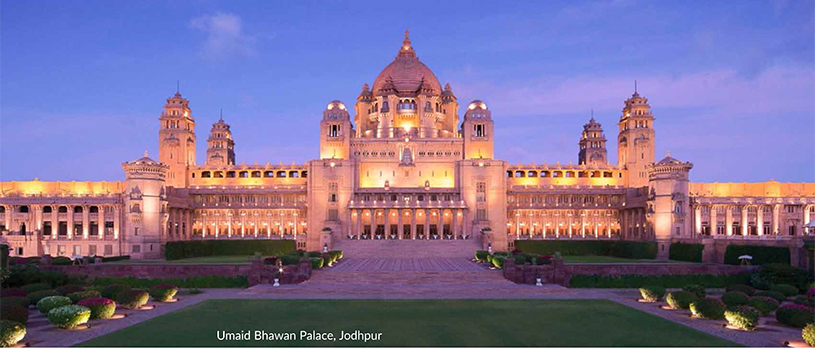
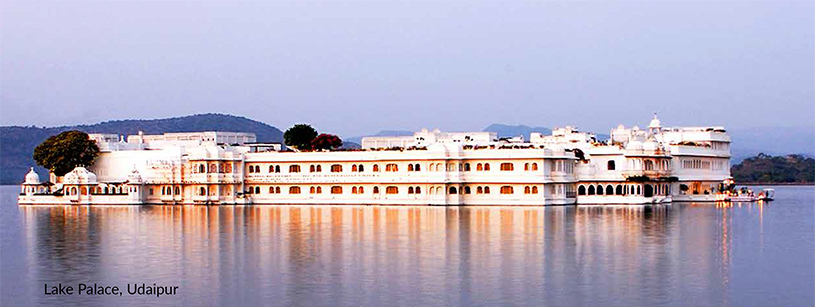



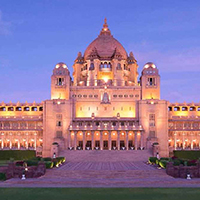

 When it comes to lavishness, the palaces in India are second to none. Historically, the country was once divided into many princely states, ruled by princes who rarely stinted when it came to self-aggrandizement. The stories about their immense wealth, which included fabulous collections of gems and other expensive items, and their lavish lifestyles are legendary.
When it comes to lavishness, the palaces in India are second to none. Historically, the country was once divided into many princely states, ruled by princes who rarely stinted when it came to self-aggrandizement. The stories about their immense wealth, which included fabulous collections of gems and other expensive items, and their lavish lifestyles are legendary. No expenses were spared in building their palaces. These were vast places, with innumerable private rooms, halls, passages, courtyards, balconies, terraces, fountains, pools, and gardens. They were extravagantly decorated with arches, pillars, tiles, decorative screens, friezes, and paintings. Some of the leading palace builders were the Rajput clans, the Mughals, the Marathas, and the various minor Nawabs and Princes.
No expenses were spared in building their palaces. These were vast places, with innumerable private rooms, halls, passages, courtyards, balconies, terraces, fountains, pools, and gardens. They were extravagantly decorated with arches, pillars, tiles, decorative screens, friezes, and paintings. Some of the leading palace builders were the Rajput clans, the Mughals, the Marathas, and the various minor Nawabs and Princes. Many of the erstwhile Indian royals retained their palaces after they lost the privileges of the privy purse and, as these palaces were expensive to maintain, they joined forces with savvy hoteliers to transform them into Heritage hotels. Quite a few palaces in Rajasthan, such as Ajit Bhawan, Udai Vilas Palace, and the Jai Mahal Palace, were so transformed, and now Indian and foreign visitors can pay hefty rates to experience, if only for a brief duration, what it was like to live in these wonderful dwellings.Some of these hotels enhance the experience with cultural shows.
Many of the erstwhile Indian royals retained their palaces after they lost the privileges of the privy purse and, as these palaces were expensive to maintain, they joined forces with savvy hoteliers to transform them into Heritage hotels. Quite a few palaces in Rajasthan, such as Ajit Bhawan, Udai Vilas Palace, and the Jai Mahal Palace, were so transformed, and now Indian and foreign visitors can pay hefty rates to experience, if only for a brief duration, what it was like to live in these wonderful dwellings.Some of these hotels enhance the experience with cultural shows. Other palaces, scattered around Rajasthan, Gujarat, Madhya Pradesh, Maharashtra, Karnataka, and other states, are generally open only for viewing, with sections transformed into museums with excellent collections of rare and valuable historical artefacts.These include the Wadiyar Palace in Mysore, the Laxmi Niwas Palace in Baroda,the Hawa Mahal in Jaipur, and the following two palaces:
Other palaces, scattered around Rajasthan, Gujarat, Madhya Pradesh, Maharashtra, Karnataka, and other states, are generally open only for viewing, with sections transformed into museums with excellent collections of rare and valuable historical artefacts.These include the Wadiyar Palace in Mysore, the Laxmi Niwas Palace in Baroda,the Hawa Mahal in Jaipur, and the following two palaces: Located in Padmanabhapuram, Kanyakumari District, Tamil Nadu, Padmanabhapuram Palace was built in 1601 by the ruler of Venad, Iravi Varma Kulasekhara Perumal, and rebuilt in 1750 by AnizhamThirunalMarthanda Varma, Raja of Travancore. The palace complex is a magnificent example of traditional Kerali architecture, with tapering roofs, halls, corridors, pillars, courtyards, secret underground passages, and polished floors; interestingly, the floor in the Durbar Hall was made using river sand, lime, charcoal, burnt coconut, jaggery, and egg white! Another notable item is the King’s medicinal bed, made from the wood of medicinal plants. Expect to spend over two hours here. The intricate wood-carvings, painted murals and bronze lamps are not to be missed, as also the Antiquities Museum housed in the ThekeeKottaram.
Located in Padmanabhapuram, Kanyakumari District, Tamil Nadu, Padmanabhapuram Palace was built in 1601 by the ruler of Venad, Iravi Varma Kulasekhara Perumal, and rebuilt in 1750 by AnizhamThirunalMarthanda Varma, Raja of Travancore. The palace complex is a magnificent example of traditional Kerali architecture, with tapering roofs, halls, corridors, pillars, courtyards, secret underground passages, and polished floors; interestingly, the floor in the Durbar Hall was made using river sand, lime, charcoal, burnt coconut, jaggery, and egg white! Another notable item is the King’s medicinal bed, made from the wood of medicinal plants. Expect to spend over two hours here. The intricate wood-carvings, painted murals and bronze lamps are not to be missed, as also the Antiquities Museum housed in the ThekeeKottaram. Built in 1884 by the Mewar Dynasty’s Maharana Sajjan Singh to observe Monsoon clouds, the Monsoon Palace (also known as Sajjangarh) is set at an elevation of 3100 feet on Bansdara hill in the Aravalli range and offers a grand view of Udaipur and the surrounding countryside. The sunsets are spectacular too from this vantage and the white marble palace looks like something out of a fairytale when illuminated in the evening.
Built in 1884 by the Mewar Dynasty’s Maharana Sajjan Singh to observe Monsoon clouds, the Monsoon Palace (also known as Sajjangarh) is set at an elevation of 3100 feet on Bansdara hill in the Aravalli range and offers a grand view of Udaipur and the surrounding countryside. The sunsets are spectacular too from this vantage and the white marble palace looks like something out of a fairytale when illuminated in the evening.




















